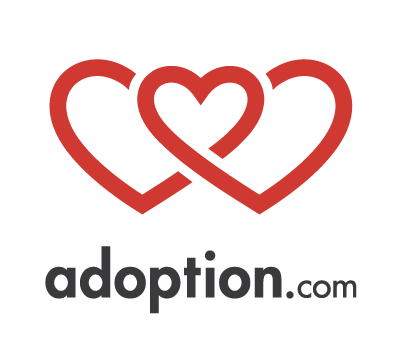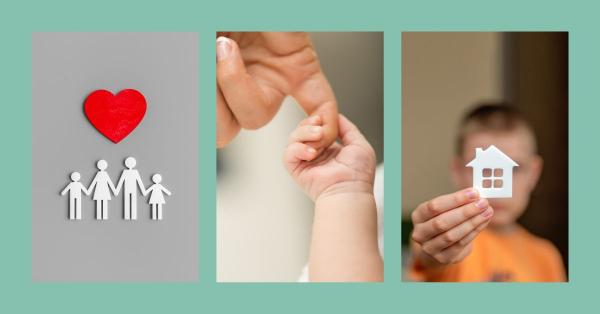Foster Adoption
What Is Foster Adoption?
Foster adoption is the legal process of adopting a child who has been placed in the foster care system due to abuse, neglect, or unsafe living conditions. While foster care’s primary goal is to reunite children with their biological families, some children cannot safely return home. When reunification is no longer an option, foster adoption provides those children with a permanent, loving home.
Foster adoption bridges child welfare with family-building. It’s a powerful way to give children the stability they need while forming or expanding your family in a meaningful, life-changing way.
Understanding the Foster Care Goal: Reunification Comes First
Foster care exists to protect children and help families heal. The initial goal is reunification—rebuilding a safe, stable home so children can return to their biological parents.
To make reunification possible, child welfare agencies typically offer biological families:
- Parenting classes
- Mental health and substance abuse treatment
- Housing and financial assistance
- Supervised visitation
- Caseworker support and monitoring
Families must complete a court-approved service plan demonstrating they can safely care for their child. This process takes time and requires cooperation and commitment.
When Reunification Is No Longer Possible
If a biological parent fails to meet the court’s requirements or continues to endanger the child, the state may begin the process to terminate parental rights (TPR). This step is not taken lightly.
Termination typically occurs when:
- The parent does not complete their service plan
- The child has experienced ongoing abuse or neglect
- The parent has abandoned the child
- The child has been in foster care for a significant period without progress from the parent (commonly 12–15 months)
Once TPR is finalized by a judge, the child becomes legally eligible for adoption. This is where foster adoption becomes a path forward.
Foster Adoption in Plain Terms
Foster adoption happens when a child who has been in the foster care system is adopted by a family—often the same family who has been fostering them. These children need permanency, stability, and love.
You don’t need to be wealthy or married to pursue foster adoption. What matters most is that you’re committed, stable, and able to provide a nurturing environment.
The Adoption Process from Foster Care (For Hopeful Adoptive Parents)
Preparing for Foster Adoption
Before opening your home to a foster-adoptive placement, preparation is key. Consider these steps:
- Research trauma-informed parenting
- Talk with foster and adoptive families
- Create a support network
- Set up a child-safe and comforting home
- Clarify the ages, needs, and situations you feel equipped to handle
Step-by-Step Guide to Foster Adoption
- Attend an orientation with your local child welfare agency.
- Complete pre-service training, often 20–30 hours.
- Undergo a home study assessing your background, home, and readiness.
- Get licensed as a foster or foster-adoptive parent.
- Wait for a match with a child who is eligible for adoption.
- Start visitation and transition planning if not already fostering the child.
- Placement occurs, and the child moves in.
- Complete a supervision period, typically six months.
- Finalization: A court hearing legally completes the adoption.
Legal Notes
Each state has unique laws governing foster adoption. Some require you to foster before adopting. Others offer dual licensing for concurrent planning. Your agency will guide you through local requirements.
Resources to Help in the Process
- Post-adoption counseling and support services
- Online and in-person support groups
- Educational books like The Connected Child
- Therapy options for parents and children
- Subsidies and financial aid, depending on the child’s needs
The Child’s Journey Through Foster Care and Adoption
From Removal to Reunification—or Adoption
When a child is removed from their home, it’s typically due to severe neglect, abuse, or unsafe conditions. The state immediately places the child in a temporary foster home while the biological family works toward reunification.
If reunification fails and the court terminates parental rights, the child becomes eligible for adoption. At this point, a new plan is developed to find a permanent family—often through foster adoption.
What Foster Children May Experience
Children in foster care may experience:
- Multiple placements
- Sibling separation
- Gaps in education or health care
- Behavioral or emotional challenges
- Trauma from abuse or neglect
- Feelings of abandonment or mistrust
Not all foster children fit into negative stereotypes. They are resilient, capable, and in need of love—but many do require extra understanding and support.
Trauma-Informed Parenting Matters
Foster-adoptive families should embrace trauma-informed parenting, which focuses on safety, connection, and empathy.
Key principles include:
- Predictability: Routines build trust.
- Empathy: See behaviors as communication.
- Calm correction: Avoid harsh discipline.
- Empowerment: Offer choices and encourage autonomy.
- Relationship over rules: Prioritize connection.
Helping Your Child Adjust to Your Family
Adjustment takes time. Here are practical tools:
- Create consistent routines
- Give your child a say in small decisions
- Use gentle, non-judgmental language
- Celebrate their cultural and personal identity
- Model patience, even when things are hard
- Find joy together—play, laugh, and be present
Some children will bond quickly. Others may resist connection. Stay steady. Your love—even when it’s not immediately returned—makes a difference.
Foster Adoption Support
The Growing Need for Foster-Adoptive Families
There are more than 100,000 children in the U.S. foster system who are eligible for adoption. Many are older, part of a sibling group, or have special needs. These children need families committed to helping them heal and thrive.
Why We Need More Foster-Certified Homes
There aren’t enough certified homes for children who need them—especially for:
- Teens
- Children of color
- LGBTQ+ youth
- Children with emotional or medical needs
- Sibling sets
Becoming a foster-adoptive parent helps close this gap. Every child deserves a safe, loving home.
How to Become a Foster or Foster-Adoptive Parent
Getting started is easier than you might think:
- Contact your local agency or county child welfare office
- Attend an info session
- Complete background checks and training
- Pass a home study
- Get licensed and begin the matching process
Your agency will support you through every step.
How to Support Foster Parents in Your Community
Even if you aren’t called to foster, you can make a difference:
- Provide meals or transportation
- Donate clothing or supplies
- Offer respite care or babysitting
- Encourage and listen without judgment
- Celebrate milestones and adoption days
Teaching Kids to Support Their Peers in Foster Care
Compassion starts at home. Help your children understand that:
- Families come in many forms
- A friend in foster care may not want to talk about their past
- Every child deserves kindness and inclusion
Raising empathetic children helps create a more supportive world.
Foster Adoption: A Lifelong Impact
Foster adoption is more than a legal process—it’s a lifelong promise to walk with a child through healing, growth, and love. It gives children permanence after instability, and it gives families a powerful way to grow.
Whether you’re ready to adopt, considering foster care, or want to support others, you can play a part in a child’s story.
Take the Next Step:
- Visit Adoption.com’s Foster Adoption Guide
- Learn how to become a licensed foster parent
- Support your local Heart Gallery—a project that helps children eligible for adoption find families
Every child deserves a home where they are safe, supported, and loved. Foster adoption makes that possible.









